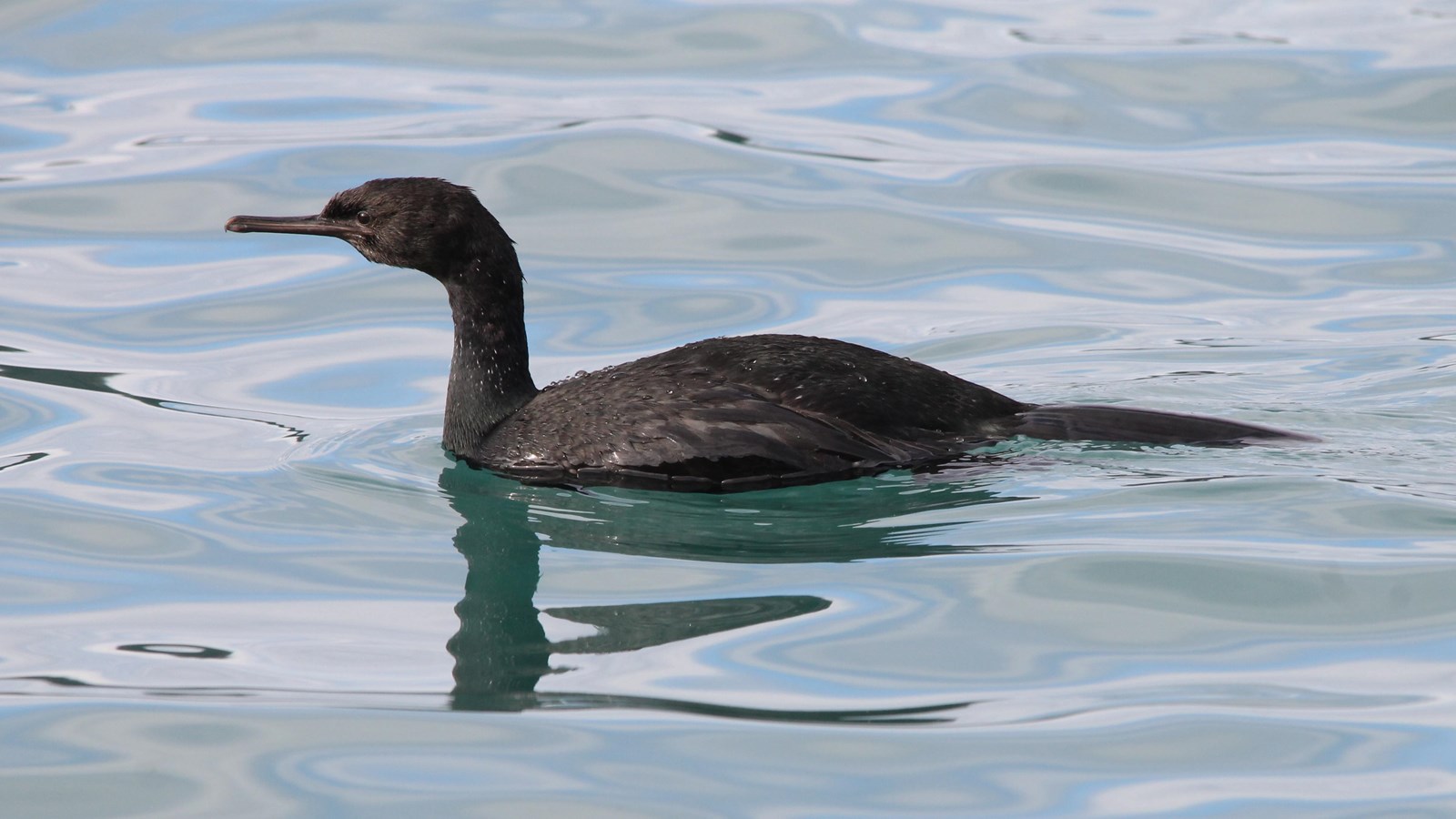Last updated: April 22, 2021
Place
Birds of South Marble: Pelagic Cormorant

NPS Photo/S. Schaller
Pelagic Cormorant, Phalacrocorax pelagicus
All dark with a metallic iridescence, breeding adults of both sexes grow crests on top of their head and at the nape, and show white flanks. These fish-eaters swim to locate prey, then dive propelled by their feet while steering with their wings. They build pedestal nests of grasses and seaweed cemented together by guano, and tend to reuse nests year after year. They lay 2-5 eggs; young have sooty-gray feathers. / If the bird you are looking at has orange skin around the base of the bill and chin you are looking at a double-crested cormorant, P. auritus, seen occasionally near SMI. White crests on head may not be erect.
| Wingspan | Length | Weight |
| 39" | 28" | 3.9 lbs/1800 g |
Know before you go: South Marble Island is closed to camping and foot traffic year-round. All vessels (including kayaks) must remain further than 50 yards from the southern half of South Marble Island and remain further than 100 yards from nesting seabird colonies. Binoculars are advised.
